Browse Houses
Search Results: Returned 5516 records. Displaying results 701 – 800
| House name | Description | |
|---|---|---|
| Ballywalter | The seat of the Welstead family valued at £45 in the early 1850s and held in fee. The original house was replaced by an early 19th century building. It was still valued at £45 in 1906 and occupied by S.Q.W. Penrose. It was burnt in May 1921 during the War of Independence and later rebuilt. It is still a family residence. |

|
| Ballywalter | Occupied in the early 1850s by John Doherty, valued at £12 and held from the [Reverend] John Burdett, uncle of Arthur Burdett. | |
| Ballywalter | F. V. Wayland was resident at Ballywalter in 1837. Francis Wayland of Ballywalter was murdered in 1838 on his way to a fair. William Weyland was living at Ballywalter in the mid 19th century, when the house was held from William Cooper and valued at £12.5 shillings. The Waylands and Coopers were related. This 18th century house is still in use as a family residence. |
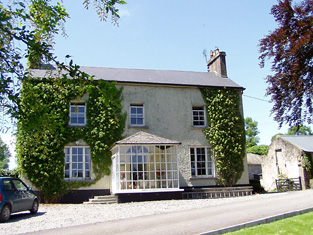
|
| Ballywilliam | Joshua Sutton lived at Ballywilliam in 1814. In 1851 the estate of William Parry Sutton, a minor, was offered for sale in the Encumbered Estates Court. It included interest in the lands of Shanrahan. The purchasers included Messers. Carroll, Greaves and Mooney, in trust. At the time of Griffith's Valuation, James King was resident, when the buildings were valued at £9.10 shillings and held from the Irish Land Company. |

|
| Ballywilliam | Ballywilliam House was being leased by Benjamin Barter to a member of the Bowen family at the time of Griffith's Valuation, when it was valued at £20. In 1837 Lewis referred to is as the seat of B. Barter. It is still extant. |
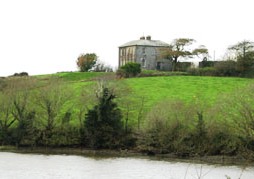
|
| Ballywilliam | Seat of the Maunsell family, Ballywilliam was the residence of T.M. Maunsell in 1837 and of George M. Maunsell at the time of Griffith's Valuation when the buildings were valued at £37. In 1906 the value of the house had increased to £39 and it was occupied by Daniel M. Maunsell. A mantelpiece from Ballywilliam is now in the library at Glin Castle. |
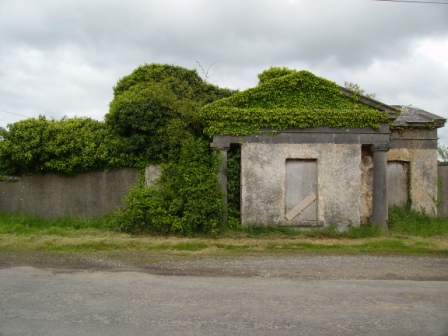
|
| Ballywire | The demesne of this house straddled the border between counties Limerick and Tipperary. In 1826 Fitzgerald refers to the house having been "lately fitted up and furnished in a very tasteful manner". Godfrey Massey was resident at Ballywire in 1814. By 1837 it had become the home of John Bolton Massy who held the property in the 1850s from the Provost and Fellows of Trinity College, Dublin. It was valued at £40. This house is still a residence. |

|
| Balteenbrack | Rev. Patrick Sheehy was leasing this property from the representatives of Henry Galway at the time of Griffith's Valuation, when it was valued at £10. There is still an extant house at the site. | |
| Baltimore House | Jane Freke was leasing this property from Lady Carbery's estate at the time of Griffith's Valuation, when it was valued at £12 10s. Lewis notes Baltimore Castle as the residence of Mrs. Freke in 1837. The building labelled Baltimore House on the 1st and 25-inch edition Ordnance Survey maps is still extant. Baltimore Castle is an older, seventeenth century building which has recently been restored. |

|
| Balydooley Lodge | John Hanley was leasing this property from St. George Caulfeild at the time of Griffith's Valuation, when it was valued at £5. It is still extant. | |
| Baneena | John Ross occupied a house at Baneena North valued at £11.10 shillings in the mid 19th century. He held the property from Abraham Devonsher. This house is not surrounded by a demesne on the first Ordnance Survey map. | |
| Banemore House | Robert John Palmer was in possession of this house at the time of Griffith's Valuation, when it was valued at £17 15s. In 1837 Lewis notes it as the seat of R.J. Palmer. Leet records it as the seat of Thomas O'Halloran in 1814. Bary notes that it was in the possession of the Palmer family from the eighteenth to the early twentieth century and was the site of a soup kitchen during the Famine. It is now a ruin. In some sources it is known as Baunmore House. Robert John Palmer of Listowel was the son of John Grove Palmer, attorney and advocate on the island of Bermuda and grandson of John Palmer of Lincoln's Inn and Limerick city (''The Gentleman's Magazine'' Vol 102, Part I, 569). | |
| Bangor or Bingham Lodge | Built on the western edge of the town of Bangor by Major Denis Bingham. It was described in the Ordnance Survey Name Books as a newly erected shooting lodge. It is still extant but currently disused. |

|
| Banna House | Robert E. Stokes was leasing this property from the Earl of Listowel's estate at the time of Griffith's Valuation, when it was valued at £11. Bary writes that it was built by Oliver Stokes in 1815. It was demolished many years ago. | |
| Bannixtown | A Clutterbuck home from at least the 1770s, Richard Clutterbuck was resident at Bannixtown in 1814. On the first Ordnance Survey map circa 1838 Bannixtown house is recorded as "in ruins". In 1840, though, the Ordnance Survey Name Books mention Bannixtown as a large farmhouse. The 25-inch map shows a building labelled "Bannixtown House" at the same site. A house valued at £19 was occupied by John Shea at Bannixtown in the early 1850s and held from the representatives of Thomas Clutterbuck. John Shea of Bannixtown owned 254 acres in the 1870s. | |
| Bansha Castle | The home of the O'Brien Butlers in the 18th century. In 1786 Wilson refers to Bansha as the seat of Mr.O'Brien. The residence of the O'Ryan family in the first half of the 19th century, occupied by Andrew O'Ryan in 1814 and Edmund O'Ryan in 1837. John Chaytor was resident fromn 1840 and into the early 1850s holding the buildings valued at £25 from Edmund O'Ryan. This property was advertised for sale in the early 1860s. The rental of 1866 describes this residence as containing " Four spacious reception rooms, six well ventilated bed rooms, bath room and servant's dormitory". In the 1870s Major John Lutman of Bansha Castle, who was married to an O'Ryan, owned 485 acres in county Tipperary and 94 acres in county Limerick. Bansha Castle was the home of Sir William Francis Butler in the early 20th century. The Russell family now offer luxury accommodation at Bansha Castle. see http://www.banshacastle.com/index.html |

|
| Bansha House | Bansha House is marked on the first edition Ordnance Survey Map circa 1840. It was the home of Robert Clarke, fourth son of the Reverend Marshal Clarke, in 1837. John Vincent occupied a house valued at £20 in this townland at the time of Griffith's Valuation. He held it from Richard Butler. The National Inventory of Architectural Heritage dates this house from about 1880. It now functions as a guest house. http://www.tipp.ie/banshahs.htm |

|
| Bantis | In 1814 Mr Kennedy is recorded as the proprietor of Bantis and Lewis mentions the extensive brewery of Edward Kennedy at Bantis in 1837. The Ordnance Survey Name Books record Bantis as "a neat dwelling house", the residence of Edward Kennedy. Buildings valued at £31+ and 526 acres at Bantis were held from the Honourable O.F.G. Toler by Edward, James, Denis, John and Patrick Kennedy and Henry Fitzgerald at the time of Griffith's Valuation. A house is still extant at the site. | |
| Bantry House | Bantry House was held in fee by the Earl of Bantry at the time of Griffith's Valuation, when it was valued at £125. The house history indicates it has been the home of the White family since about 1765 when Richard White purchased what was then Blackrock House. Wilson still refers to it by the latter name in 1786 but it is named Bantry House on the 1st edition Ordnance Survey map of the 1830s. The Irish Tourist Association survey of the 1940s contains a detailed description of the house's interior at that time. Bantry House has been open to the public since 1946 and a prestigous music festival is held there each summer. For more information see www.bantryhouse.com. |

|
| Barbersfort | Originally a Bermingham residence, sold to the Ruttledges in 1816 and recorded as the seat of Mrs. Rutledge in 1894. Burnt down in the 1920s apparently by accident. A new house was built on part of the site which adjoins the old farmyard. Now the home of the Dunlevy family. |

|
| Barleyhill | In 1786 Wilson noted Barleyhill as the seat of Mr. McManus. Ruane dates the house from about 1748 with alterations in the 1770s and 1790s. He states that the house and 170 acres were occupied by George Harkin at the time of Griffith's Valuation, however the Valuation records Bernard McManus as the occupier of the house valued at £15. Quinn records that Bernard McManus had gone to live at Brownstown in 1856. The Aitken family have lived at Barleyhill for over a hundred years. |
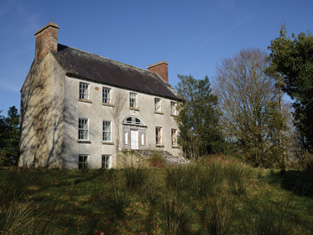
|
| Barn | The seat of the Moore family in the 18th, 19th and 20th centuries. In 1786 Wilson refers to it as the seat of Thomas Moore In 1840 the Ordnance Survey Letter Books note that it had "a garden nursery and ornamental ground". It was held by Stephen Moore in fee in the mid 19th century and valued at £49+. Randal K. Moore was resident in 1906 and Mr and Mrs Murray Moore in the early 1940s when the house contained a very fine library and antique art collection. Barn is still extant. |

|
| Barna | Barna was the home of the Lee family in the 18th and first half of the 19th century. Leet records G. Lee as resident in 1814 and H. Lee was the proprietor in 1837 and at the time of Griffith's Valuation when the house was valued at £23+. This house no longer exists. | |
| Barna | Wilson refers to Barna as the seat of Mr. Lynch in 1786. Nicholas Lynch held this property in fee at the time of Griffith's Valuation,when it was valued at £20. It was the seat of Marcus Lynch in 1894 and the family were still resident in the early 20th century. The house is still extant surrounded by an apartment development. |

|
| Barnaboy | Francis O'Grady was leasing a property at Barnaboy, barony of Frenchpark, valued at £4 15s together with 179 acres of land from William Longfield's estate at the time of Griffith's Valuation. Farm buildings exist at the site now. | |
| Barnabrow | This house was the residence of Timothy Lane in 1814. Located on the Thomond estate and occupied by William G. Fitzgerald who held the property from John [Royal] Wilkinson at the time of Griffith's Valuation. The buildings were valued at £28. A lithograph of this house is included in the sale rental of the Thomond estate 1857. The representatives of Edward de l'E. Litton were recorded as the occupants of this house in 1906. The house now functions as a guest house. |

|
| Barnane | Barnane, at the foot of the Devil's Bit mountain, was the seat of a branch of the Carden family. Occupied by John Carden in 1814 and by R. Carden in 1837. John Carden held the property in fee with 1,430 acres at the time of Griffith's Valuation. Andrew M. Carden was resident at Barnane in 1906 when the buildings were valued at £120. The house is now a ruin. |
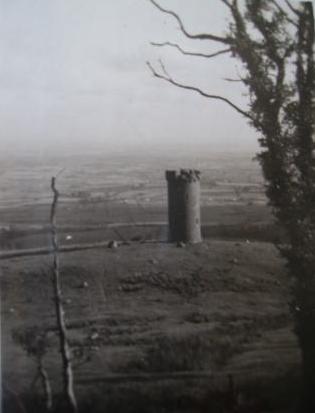
|
| Barnavihall House | At the time of Griffith's Valuation John Connolly was leasing this property, valued at £8, together with over 250 acres, from R.W. Greene. There is still an extant house at the site. |

|
| Barnlough | This house was a Smithwick family home in the 18th and early part of the 19th centuries, occupied by Thomas Smythwick in 1814 and by P. Smithwick in 1837. Barnlough was held by the Earl of Portarlington in fee at the time of Griffith's Valuation, when the buildings were valued at £11.10 shillings. It is no longer extant. | |
| Barntick | A 3 storey house dating back to the 17th century, it was originally a Hickman home. The Hickmans sold the property to the Peacockes in the mid 18th century. In 1786 Wilson refers to it as the seat of Mr. Peacocke. Occupied by Daniel Powel in 1814 the house was later owned by the Roche family of Limerick and leased to the Lyons, who eventually bought the property. Now owned by the Murphy family through marriage with a member of the Lyons family. |
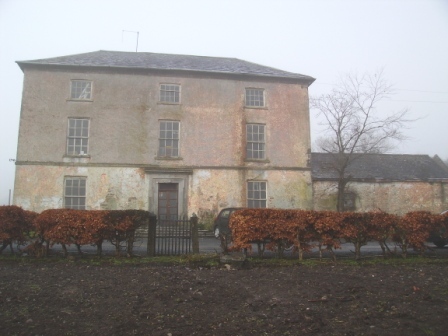
|
| Baronne Court | The Ordnance Survey Name Books refer to Tinnakilly House and Observatory in the townland of Stonestown, the residence of Robert Robinson in 1840. The property was for sale in the Encumbered Estates' Court in February 1851. The sale details state that it was erected at a cost of £6,000 in 1830. It was altered by the Marshalls and renamed Baronne Court. Reverend Joseph Marshall is recorded as the occupier of the house valued at £53 at the time of Griffith's Valuation. The Reverend Joseph held the property in fee. William K. Marshall was recorded by Slater as the proprietor in 1894. This house is now demolished although the farm buildings still remain. |

|
| Barranagh House | A house close to the sea on the Mullet peninsular. It was held in fee by John W.O. Richards at the time of Griffith's Valuation when it was valued at £7. A house and farm buildings are still extant at the site. | |
| Barranastook | In 1851 Simon Brien was leasing this property from the Musgrave estate when it was valued at £12. In 1906 Sir Richard Musgrave still held buildings at Barranastook valued at £1 10s. | |
| Barrow House | Sir Edward Denny was leasing Barrow House to John Collis at the time of Griffith's Valuation when it was valued at £20 10s. In 1837 Lewis mentions Barra [sic] as the seat of T. Collis. In the 1830s, the Ordnance Survey Name Books indicate it was the residence of John Collis, having been built about two centuries previously. Leet noted it as the seat of John Collis in 1814. Bary states that the house was built by a William Collis, a Cromwellian officer, and continued to be associated with the Collis family until latter half of the nineteenth century. In the 1990s it was a restaurant and guesthouse but has now reverted to private ownership. |
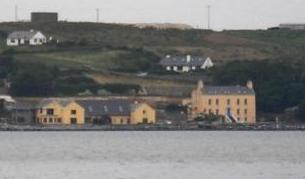
|
| Barry's Lodge | Occupied by D. Barry in 1837 and by Henry Barry in the early 1850s. He held the property valued at £28 from Samuel Reeves. | |
| Barryscourt | Originally a seat of the Barry family, Earls of Barrymore, it had become a Coppinger home by the mid 18th century. Wilson refers to it as the seat of Mr. Coppinger in 1786 and also notes "the castle of Barry's Court". It was the residence of William Coppinger in 1814 and in the early 1850s, when it was held from Sir William Clarke and valued at £22. Following William's death in 1862 this property passed to his nephew Morgan John O'Connell. Bence Jones records it as a ruin but the original medieval castle has been refurbished and is now open to the public. In the 1940s the Irish Tourist Association survey included a description of both buildings. | |
| Barryshall | Barryshall was held in fee by the Smith-Barry estate at the time of Griffith's Valuation, when it was valued at £15. In 1837, Lewis referred to it as the seat of J.Lucas. In 1894 Slater refers to it as the seat of George Lamb. In 1942 the Irish Tourist Association Survey stated that the house had been erected by the Barry family in the mid eighteenth century. Barryshall is still extant. |

|
| Bartragh House | A Kirkwood family home in the 19th century. At the time of Griffith's Valuation, the property was leased by William Hopper from the Kirkwood estate when the buildings were valued at £16. A house is still extant at the site though in a dilapidated state. |
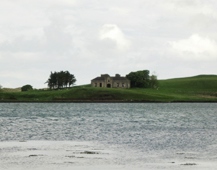
|
| Battlefield | McTernan notes that Battlefield was built for the Knott family in the early nineteenth century. At the time of Griffith's Valuation James Knott occupied the property, then valued at £20. Both Leet in 1814 and Lewis in 1837 record Battlefield as a residence of the Knott family. In the later nineteenth century the house passed into the ownership of the Robinson family, descendents of the Knotts. with whom it remained until the 1940s. It was sold and subsequently demolished. | |
| Baunmore | Held in fee by Richard Kirwan at the time of Griffith's Valuation when it was valued at £7. The house was extended and enlarged towards the end of the nineteenth century. It as well as yard buildings, gates and walls still remain. |

|
| Baurnahulla House/The Cottage | George Robinson was leasing this property from the representatives of Thomas Deasy at the time of Griffith's Valuation, when it was valued at £12 15s. The adjacent mills were valued at £14. A house labelled The Cottage is shown adjacent to the site of Baurnahulla House on the 25-inch Ordnance Survey map of the 1890s. A house still exists at this site. Local sources suggest this was a house lived in by a Fr. Ryan in the 1830s. | |
| Bawnboy House | According to Chris Maguire Bawnboy House was built about 1790 by John Enery see http://www.bawnboy.com/History-Heritage-Folklore/pages/bawnboy-84.html In 1814 Nathaniel Sneyd was occupying the house and by the 1850s John D. Rochfort was owner and occupier. The buildings were valued at £12.15.0. By 1876, the house was occupied by William Johnston and in the early 20th century Bawnboy was the home of Robert Henry Johnstone and family. Mulligan records this house as derelict. The Lawders also held Corr [Cor?] and Bawnboy, see GO MS 182: 96-113 in the National Library. |
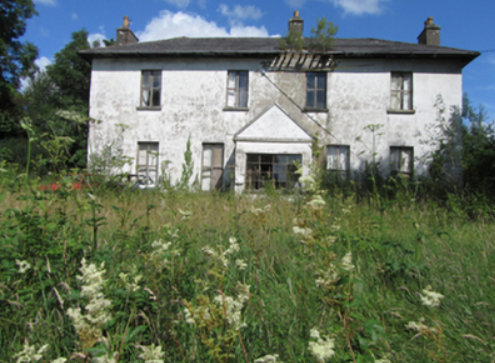
|
| Bawnlahan | Edward Powell held this property in fee at the time of Griffith's Valuation, when it was valued at £21. Lewis describes it as the residence of Major Powell in 1837. In the 1770s it was the seat of an O'Donovan family. Lt. Col. Henry Powell was the owner in 1906 when it was valued at £21. By 1945 the Irish Tourist Association Survey reported that it was the home of the O'Callaghan family who "had bought it from the Powells". Bawnlahan is still extant and occupied. |
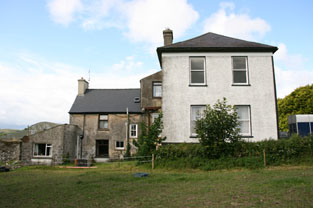
|
| Bawnnafinny | Described at the time of Griffith's Valuation as a caretaker's house, valued at £12 and held by St John Jefferyes in fee. | |
| Bay View (Bantry) | Samuel Daly was leasing this property from the Earl of Bantry's estate in 1852 when it was valued at over £32. It is not named on the 1st edition Ordnance Survey Map but appears as Bay View on the 25-inch map of the 1890s. There is still an extant house at the site. | |
| Bay View (Dungarvan) | Richard Hamilton Lowe was leasing this property from the Barron estate at the time of Griffith's Valuation when it was valued at £28.It was also noted as his seat by Lewis in 1837. It is no longer extant. | |
| Bayly's Farm | The home of Lancelot P. Bayly and his family in the 19th century, held from his brother John. The house was valued at £13.6 shillings at the time of Griffith's Valuation. This house with modern additions still functions as a residence. It also offers guest accommodation. See www.baylyfarm.ie. |
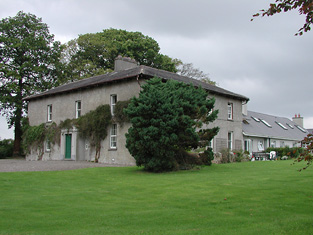
|
| Bayview (Clashmore) | Rev. Michael Purcell was leasing this property from Lord Decies estate in 1851 when it was valued at £12. There is still an extant house at this site. | |
| Bayview House (Bere) | William Reid was leasing a property from the Puxley estate at the time of Griffith's Valuation, when it was valued at almost £10. This may be the house noted on the later edition Ordnance Survey Map as Bayview House. It is still extant and occupied. | |
| Bayview House (Middlethird) | At the time of Griffith's Valuation, Rev. Nicholas Cantwell was leasing a property, valued at £18 10s, from Edward O'Neill Power. It is labelled as Boarding School on the 1st edition Ordnance Map but appears as Bayview House on the later 25-inch edition of the 1890s. Rev. Cantwell was parish priest of Tramore and the builder of the Catholic Church there. This house is still extant and occupied. |
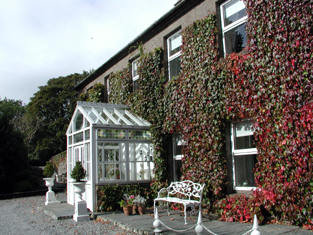
|
| Beakstown House | Major Ledwell was resident at Beakstown in 1837 and the Ordnance Survey Name Books also mention it as his residence in 1840. At the time of Griffith's Valuation one house at Beakstown appears to be in use as an auxiliary poorhouse, held by the Reverend George Peacock from the Court of Chancery and valued at £22+. Another property seems to be labelled Abbey View on the 1st Edition Ordnance Survey map but as Beakstown Cottage on the 25-inch map of the 1890s. The OS Name Books refer to this house as the residence of Mr. Mullvany, proprietor of Beakstown Flour Mills nearby. The name Beakstown Cottage had previously belonged to another property in Beakstown which is still extant [S087559]. The original Beakstown House does not appear to be extant. | |
| Bearforest | Named after Richard Beare who held this land in the early 18th century, the house was built in 1807-1808 by Robert Delacour, a partner in the Delacour bank of Mallow. Townsend writes that it was designed by Richard Morrison. Delacour was living in the house in 1814 but had vacated it by 1837. At the time of Griffith's Valuation it was occupied by John Hugh Bainbridge who held it from James Murphy. The buildings were valued at £70. Bence Jones records the Purdon Coote family as later owners. The house was burnt in June 1921 during the War of Independence when it was the residence of Maj. Charles Purdon Coote but was rebuilt. |

|
| Bearforest Upper | The residence of the Keatings from the late 18th century, Hajba writes that it was occupied in 1845 by Matthew Seward. Griffith's Valuation however records Henry Keating as resident. He held the property from Anthony O'Connor and the buildings were valued at £25. | |
| Beaufield House | "Bowfield" House was occupied by E. Howley in the 1830s. On both the 1st and 25-inch editions of the Ordnance Survey maps the house is labelled Beaufield House. No house of more that £1 valuation was recorded in the townland of Carrowcastle at the time of Griffith's Valuation. It is no longer extant. | |
| Beaufort | Reverend Edward Day was in possession of the house at Beaufort at the time of Griffith’s Valuation when it was valued at £37. Lewis refers to it as the seat of Frederick W. Mullins in 1837. In 1814 Leet also refers to it as the residence of Reverend F. Mullins. In 1786 Wilson refers to Beaufort as the seat of Hon. Dean Crosbie. Various sources, including Bary, indicate that it was built on the site of a tower house known as Short Castle. . It was sold by the Mullins estate in the mid nineteenth century to the Day family who sold it again in the 1880s. Referred to by Slater in 1894 as the seat of Lt-Col. E. Nash Leahy. It is still extant and occupied. |

|
| Beaumont | William Wright was leasing this property from Rev. Thomas Beamish at the time of Griffith's Valuation, when it was valued at £10 10s. Built after the 1st edition Ordnance Survey map opposite the site of a diocesan school. In 1814, however, Leet noted Beaumount as the seat of William Beamish. Mrs. Susan Beamish, of Beaumont, Clonakilty, was the owner of over 1300 acres in county Cork in the 1870s. This house is no longer extant. | |
| Beaver Lodge & Carrigaline Mill | Michael Roberts was leasing this property from Michael O'Brien at the time of Griffith's Valuation. It included a mill and was valued at £100. Buildings at this site appear to have been demolished in the first decade of this century. | |
| Beckscourt House | Becks Court, located just outside the town of Bailieborough on the Young estate, was occupied by the Reverend Arnold Cosby in 1814. Lewis records the Reverend E. Mahaffy as resident. By the mid-19th century it was occupied by Sarah Mahaffy who held the property from Sir John Young of Bailieborough Castle. The buildings were valued at £12. | |
| Bedford House | Wilson refers to Bedford as the seat of Colthurst Bateman in 1786. In 1837 Lewis mentions Bedford House as the seat of S.S. Raymond.At the time of Griffith's Valuation, it was being leased by Samuel Raymond to Listowel Board of Guardians as an auxilliary workhouse and was valued at €25. Bary notes that this house was associated with the Bateman family and may have been built for the marriage of Colthurst Bateman in 1775. It is now a ruin. | |
| Beech Abbey | Originally a Begg residence, Beech Abbey in the mid 1850s was occupied by William Acheson, who was the main tenant of the Babington lands in the parish of Aughrim. The house was only valued at £2.10 shillings. It appears to have fallen into ruin by the 1890s. | |
| Beech Cottage | Eliza Lepper was leasing this property from the representatives of Robert Lepper at the time of Griffith’s Valuation, when it was valued at £13. in 1837 Lewis referred to it as the seat of Reverend A. Clements. It is no longer extant. | |
| Beech Cottage (Inishowen) | Eliza Lepper was leasing this property from the representatives of Robert Lepper at the time of Griffith’s Valuation, when it was valued at £13. It is no longer extant. | |
| Beech Cottage (Inishowen) | Eliza Lepper was leasing this property from the representatives of Robert Lepper at the time of Griffith’s Valuation, when it was valued at £13. It is no longer extant. | |
| Beech Hill | Located on the outskirts of Monaghan town, Beech Hill is named on the 1st edition 6 inch Ordnance Survey Map (1836). The buildings at Beech Hill were valued at £40 in the mid-19th century. William Murray was the occupant. He held the property from Lord Rossmore. Sarah Ker, eldest daughter of André Allen Ker, is described in Burke’s Landed Gentry of Ireland (1904) as resident here. In 1880 she married Fitzjohn Robert Irwin of Kilkeel, county Down. Beech Hill College, a secondary school, is now located on this site. | |
| Beech Hill | Beech Hill was built in the mid to late 18th century. In 1786 Wilson mentions it as the seat of Mr. Mahon. In 1814 Beech Hill was the residence of Bernard Mahon. It was offered for sale by the Mahons in 1851 and it was owned at the time of Griffith's Valuation by Edward C. Villiers and was valued at £26. In 1906 Beech Hill House was still valued at £26. It is now in ruins. |
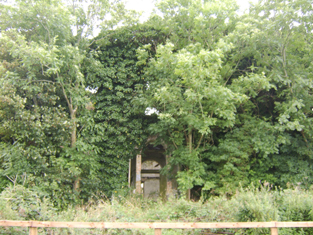
|
| Beech Park | An early 19th century house, the home of Marcus Keane and his family in the 19th century. Griffith's Valuation shows that he held the property from the representatives of Michael Finucane and it was valued at £20. The house was still in the possession of Marcus Keane in 1906. The house is no longer extant. | |
| Beechgrove | This house was leased by George Rutledge from Robert Fair at the time of Griffith's Valuation when it was valued at £10. Beechgrove was noted by Lewis as a residence of the Brannick family in 1837. It is still extant but unoccupied. |

|
| Beechlawn House (Kilcloony) | John Craig was leasing a house valued at £10 to Geoffrey Prendergast at Pollboy, parish of Kilcloony, at the time of Griffith's Valuation. On the 1st edition Ordnance Survey map the building at this site is labelled schoolhouse. However, a larger building of differing proportions is shown on the later 25-inch Map of the 1890s. The property at this site is named Beechlawn House by the National Inventory of Architectural Heritage. |
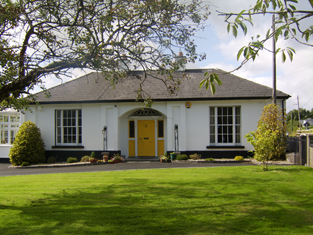
|
| Beechmount | Leased by John Cogan from Laurence Waldron at the time of Griffith's Valuation when it was valued at £5. Beechmount is still extant and occupied. | |
| Beechmount | Originally known as Mount Morgell and the home of the Morgell family in the 18th century. The residence of the Lloyd family in the 19th century, held in fee and valued at £32 in the 1850s. Seat of Gen.F.Lloyd in 1894. Recorded as the property of Major Langford in 1944 (ITA). Now a stud and racing stable run by the McNamara family. |

|
| Beechmount | Mary Nash was leasing this property to John Hornibrook at the time of Griffith's Valuation, when it was valued at £18. Lewis refers to it as the seat of J.Hornibrook in 1837. Still extant and now the site of Garryhankard Stud. In 2013 it was offered for sale. |

|
| Beechmount | Occupied by Dr Godfrey in 1837 and by Thomas Batten who held the property from Henry Lindsey in the early 1850s. A house is still extant at the site. | |
| Beechmount | At the time of Griffith's Valuation Sackville Hamilton occupied this house, valued at £22, which he held from James Lysaght, third son of William Lysaght of Fort William and Catherine Royse. James's son, William Lysaght, later lived in this house, which is still occupied. Sold to the Verlings in 1870. | |
| Beechmount | John Godfrey was the occupant of Beechmount, Fethard, in 1814 but by 1837 T. G. [Thomas Godfrey] Phillips was resident. He held the property from the Massys and in the early 1850s the buildings were valued at £18.12 shillings. The representatives of Samuel Phillips were still resident here in the 1870s. The house is still a residence. |
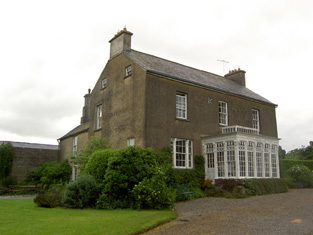
|
| Beechmount (Tramore) | In 1850 Henry Lane was leasing this property from the O'Neill-Powers when it was valued at £10. A house still exists at the site. | |
| Beechwood | A residence of the Hughes family in the 18th century. The sale rental of 1859 states that Beechwood was for many years the residence of the late Mr Ferrall. Daniel Ferrall of Beechwood was issued with a game licence in 1822. Occupied by Daniel Irwin in the 1850s when the house was valued at £40, by the Tolers in the 1880s and by Clare M. Nolan in 1906. Norton states that the Irwin brothers were nephews of Daniel Ferrall. Beechwood is no longer extant. |

|
| Beechwood Park | Beechwood, near Nenagh, was occupied by Richard C. Langford in 1814 and Lewis writes that Beechwood was the property of Colonel Toler Osborne but was occupied by D. Falkiner and had once been the residence of the Earl of Norbury. Wilson, writing in 1786, refers to "Beech Wood, the fine seat of Daniel Toler". In the mid 19th century William Osborne was resident, holding the property in fee. The buildings were valued at £33. Occupied by Lady Osborne in 1906 when the buildings were valued at £40+. The home of Philip Blake, genealogist, in the mid 20th century. This mid 18th century house still functions as a country house. |
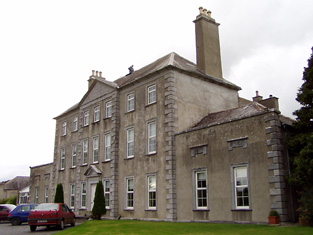
|
| Beehive | Marked on the first edition six inch Ordnance Survey map (publ. 1837), this was a single storey house with a small plantation nearby. It was owned and occupied by Charles C.H. Coote in the mid-19th century. It may have been built for the use of an employee of the Coote family. The house and its multi-bay farm yard are still extant. |
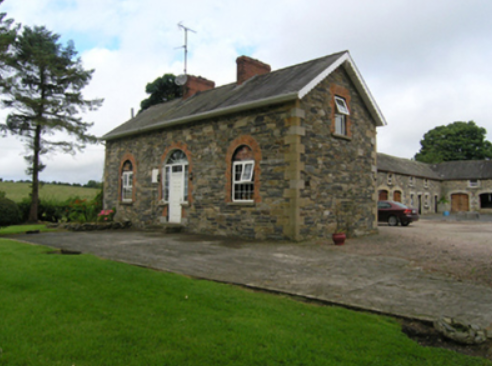
|
| Behamore | The Reverend Thomas Hawkshaw was resident here in 1814 and Benjamin Hawkshaw in 1837. The Ordnance Survey Name Books also note it as his residence, describing Behamore as "a commodious house". James Fleetwood was the occupier in the early 1850s holding the property from Lord Dunalley, it was valued at £13+. A building is still located at this site. | |
| Bekan | The exact location of the Burke's house in the village is not known. | |
| Belclare | At the time of Griffith's Valuation all of Belclare townland was held by James Pinkerton and John Thompson who had a large milling business there, as well as three houses valued at £26, £13 and £18. The Livingstones must have bought out Pinkerton and Thompson. Belclare Lodge is marked on the OS map of 183. The Livingstone's house is shown on the 25-inch map of the 1890s, labelled Shivdella House, which is still extant. Buildings were demolished at Belclare in the late 20th century to make room for building development. |

|
| Belfort | Originally a Reeves home, occupied by them in 1837, it became the residence of the Clanchy family in the mid 19th century. John Clanchy was resident at the time of Griffith's Valuation when the house was valued at £21 and held with 37 acres from the representatives of John B. Reeves. The Irish Tourist Association Survey of the 1940s refers to it as the residence of Mrs. Clanchy, widow of J.T. Clanchy and noted that it was much associated with horseracing. Bence Jones records the demolition of this house in 1958. | |
| Belgooly Cottage | At the time of Griffith's Valuation, Belgooly Cottage was being leased to William Gash by several lessors including Mrs, Charlotte Harrison, members of the Daunt family and the Earl of Bandon's estate. It was then valued at £9. It is labelled Belgooly Cottage on the 1st edition Ordnance Survey map but is not labelled on the 25-inch edition of the 1890s. | |
| Belgrove | A house possibly inherited by the Bagwells through marriage with the Harpers. The residence of J. Travers in 1814 and of the Reverend G. Gumbleton in 1837 and in the early 1850s. The Reverend Gumbleton held the property from John Bagwell and it was valued at £36. Bence Jones writes that William Gumbleton, son of the Reverend, lived in this house under 1911. The house was demolished in the mid 20th century and a new building erected. | |
| Belhavel | Belhavel was the home of Hugh Lyons Montgomery, built during the Famine. The family took up residence there in 1850. Slater refres to it as the seat of Hugh Lyons Montgomery in 1894. The Irish Tourist Association survey in the 1940s records that "every stone was taken away to build houses throughout the district". An earlier castle also in Belhavel is reputed to have been built by the first Montgomery to settle in the area in the seventeenth century. | |
| Bella | At the time of Griffith's Valuation Arthur O'Connor was the lessor of a caretaker's house, valued at £2 10s, as well as 136 acres. Lewis recorded Bella as the residence of E. French in 1837. A ruin is still extant at the site. An entrance gateway named Flynn's Cottage is visible here now! | |
| Bellamont Forest | A red brick house, designed by Sir Edward Lovett Pearce c 1728 for Thomas Coote, younger son of Richard, Baron of Collooney. Originally known as Coote Hill but its name changed in 1767 to Bellamont Forest following Charles Coote’s elevation to the title Earl of Bellamont (2nd creation). Bellamont Forest was inherited by Charles Johnston Coote in 1800. He was one of the illegitimate children of the Earl. Bellamont Forest was occupied by Richard Coote in the mid-19th century. He held it in fee and the buildings had a rateable valuation of £50.10.0. It was sold by George Coote in 1875 to Edward Smith (K.V. Mulligan), who made a fortune out of coal. Edward Patrick Dorman Smith was the eldest son of Edward Smith and his wife Isabella Cullen and succeeded to Bellamont Forest in 1880. In 1906, Captain E. P. Smith was the occupant of the mansion house with a rateable valuation of £61.5.0. The property remained in the hands of the Smith family until the 1980s when it was purchased by an Australian, John Coote, a descendant of the former owners who spent many years renovating the house. John Coote died in 2012 and the house was sold in 2015 to an American couple. | |
| Bellamont House | Archaeological research would appear to indicate that Richard Coote had a fortified house at Collooney sometimes referred to as Bellamont House or Collooney Castle. A later structure in the town, also known as Bellamont House, is not associated with the Coote family. A possible site for Collooney Castle has been identified by Timoney drawing on earlier sources such as Terence O'Rorke. | |
| Bellanagare Castle | Bellanagare was the home of the O'Conor family including the well-known historian Charles O'Conor. It is noted by Wilson as his seat in 1786. He later built Hermitage House some distance away and Bellanagare Castle is now in ruins. |
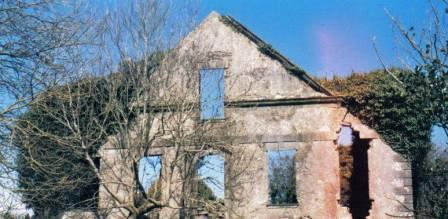
|
| Bellavary | Charles Goodwin lived in the house in the late 1830s. The Landed Estates' Court rental records that Bellavary House was leased to Standish O'Grady McDermott by William Malley on 10 Feb 1859 for 21 years. It later became a Royal Irish Constabulary barracks and burned down in 1920. | |
| Belle Isle | A house overlooking the River Shannon, originally the home of a junior branch of the family it became the property of the 3rd Lord Avonmore through his second marriage to Cecilia O'Keeffe. The seat of 3rd Lord Avonmore in the mid 19th century held by him in fee and valued at £48. Belle Isle was occupied by Thomas Maunsell in 1814 and by Lord Avonmore in 1837. This house is no longer occupied. |

|
| Belle Lake House | In 1848 William Morris was leasing this property from Shapland C. Morris when it was valued at £24. Also noted by Shaw Mason as a seat of the Morris family | |
| Belle Vue | Belle Vue house situated in Belle Vue Park in the townland of Boytonrath was occupied by Andrew Roe in 1814 and by George Roe in 1850. The buildings were valued at £9.15 shillings. The house has been altered over the years and is still the centre of a working farm. |
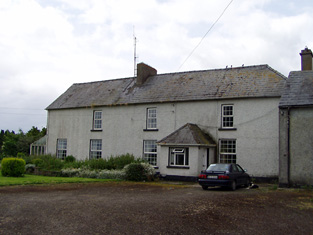
|
| Belle Vue | This house is named on the 25 inch Ordnance Survey map (survey of 1908). It was built on the Shirley estate in the mid-19th century when it was occupied by John Thomas Holland and valued at £16. John Holland was appointed a magistrate by Lord Rossmore in 1854 (Dublin Evening Mail, 11 Oct 1854). Home of the Withrington in the early 20th century, now demolished. | |
| Belleek Castle/Ballina House | Edward J Howley held Belleek Castle and demesne on a lease originally granted by James O'Hara 2nd Lord Tyrawley to Vaughan Jones for 999 years, dated 25 Mar 1739. He was residing at Belleek in the 1830s. The Castle was leased to the Pery family in the late 1860s. It is now known as Ballina House. |

|
| Belleek Manor/Abbey | Built in 1831 in the Gothic style. The seat of Maj.-Gen Saunders Knox-Gire in 1894. It was sold in 1940 to the Beckett family who resold it to Mayo County Council. It became a santorium but now functions as the hotel known as Belleek Castle. |

|
| Bellefield | Bellefield was the residence of George Furnell at the time of Griffith's Valuation. He held it from William Gabbett and it was valued at £33. William's brother Daniel lived at Bellefield at one time. A Charles A. Marrett is recorded as resident at Belfield, Limerick in 1814. Belfield Park is now the location of the Regional Maternity Hospital. | |
| Belleview (Bandon) | William Seymour was leasing this property from the Earl of Shannon's estate at the time of Griffith's Valuation, when it was valued at £14. A house still exists at this site. |

|
| Belleview Cottage | Robert Whiteside was leasing the property at Lisnalurg, known as Belleview Cottage from the Wynne estate, at the time of Griffith's Valuation. It was valued at £8. The site is now occupied by a house known as Ardeevin | |
| Belleview/Bellevue | A house located on the Vandeleur estate close to the town of Kilrush, the residence of Captain Jewell in 1814 and of Nicholas S. O'Gorman at the time of Griffith's Valuation, when it was valued at £11. Weir writes that this was a late 18th century house, still extant. |
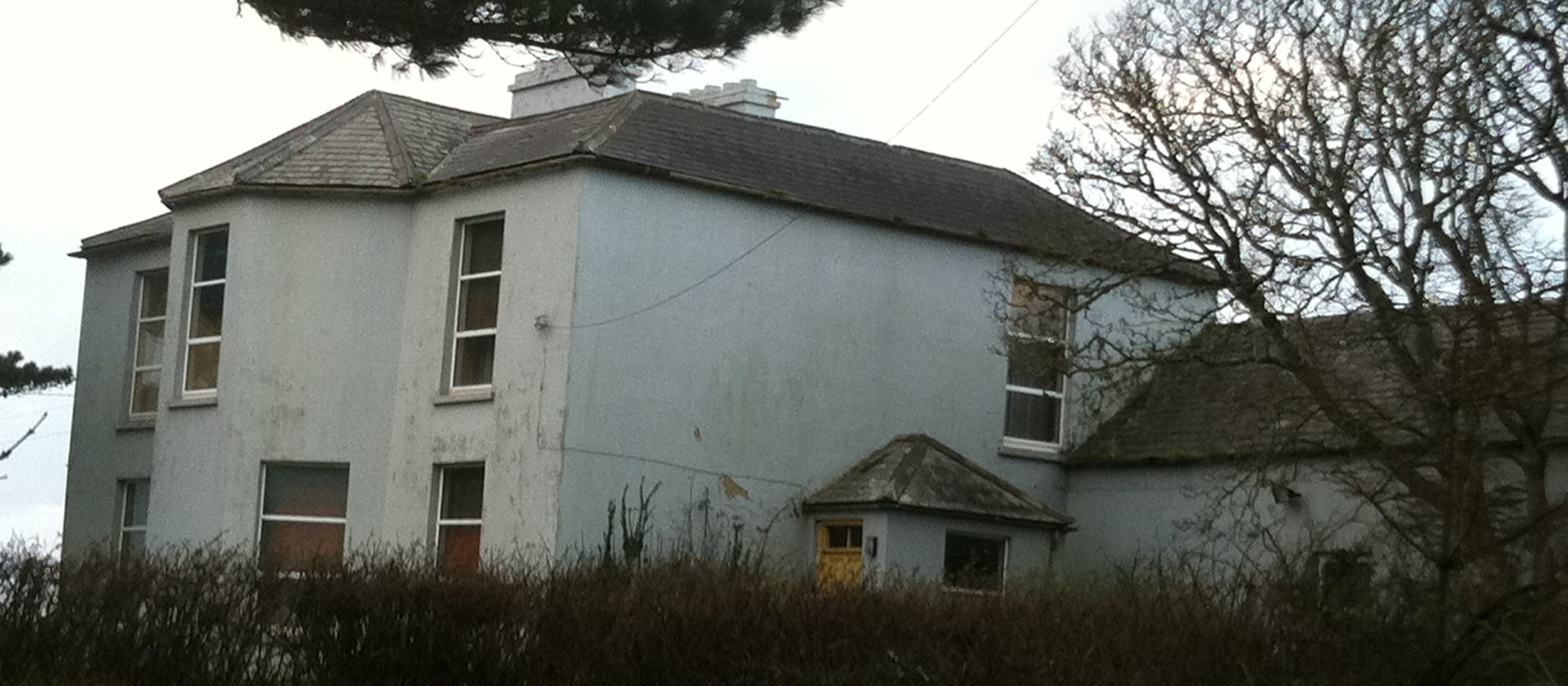
|

